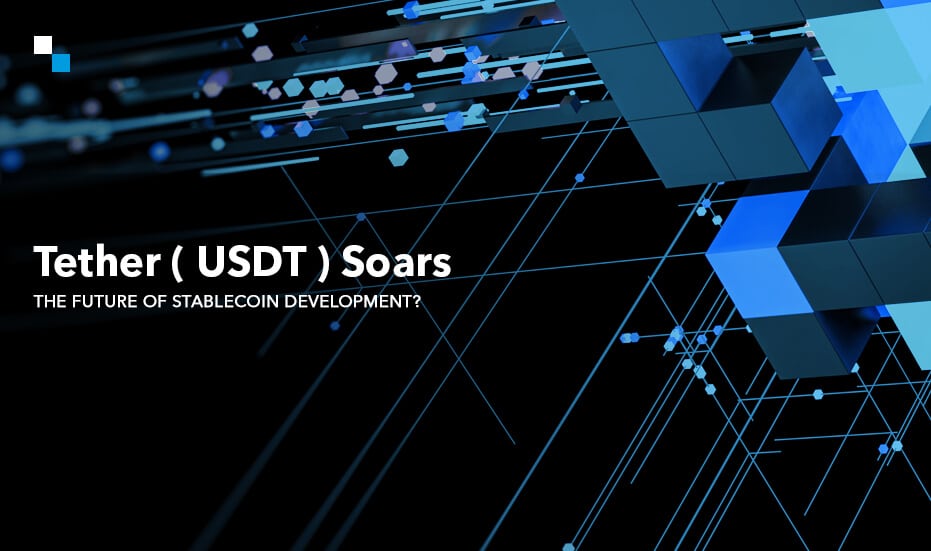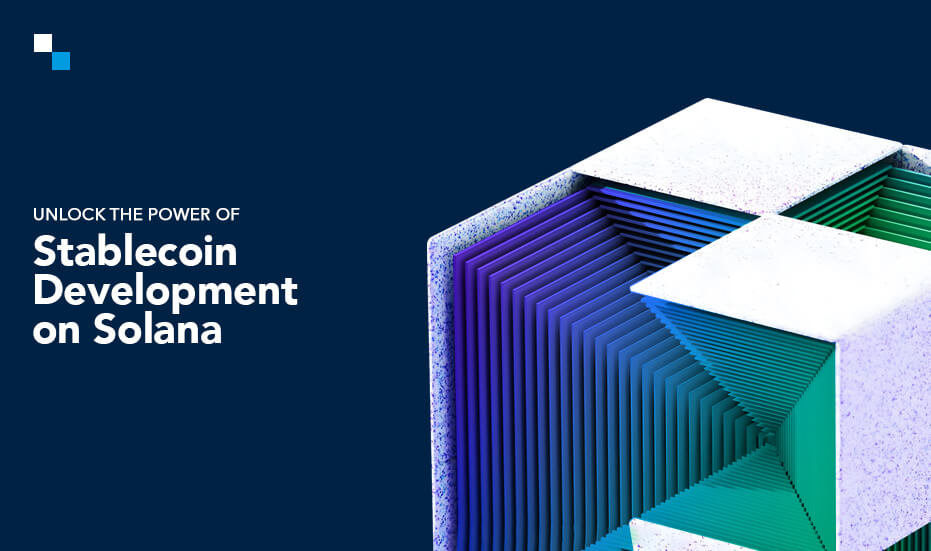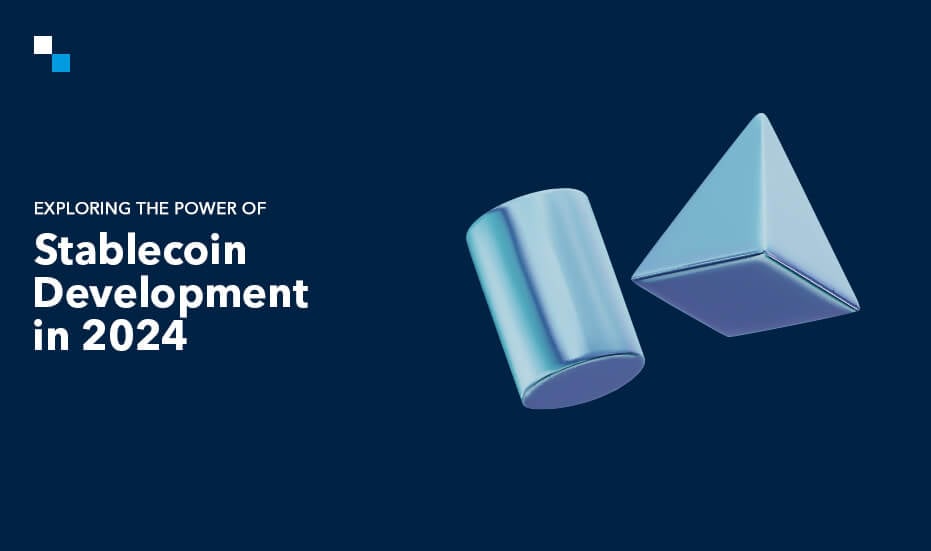
Mind-Blowing Speed: Why TRC20 Tokens Are the Future of Cryptocurrency?
March 29, 2024
Flash Loan Arbitrage Bot Development- Salient Features to Consider
March 29, 2024According to Coinmarketcap, Tether’s USDT has crossed a significant threshold, with its market capitalization now surpassing $100 billion. Since stablecoins are becoming a more dependable store of value and means of exchange in the digital economy, it is evident from the USDT’s unprecedented rise to these heights.
This signifies a noteworthy advancement in stablecoin development and acceptance of stablecoins as crucial instruments for various use cases, including facilitating cross-border transactions, providing a hedge against market volatility, and enabling efficient liquidity management in DeFi applications.
Before we begin, let’s analyze USDT’s meteoric rise and its impact on stablecoin usage.
How Did USDT Spark the Revolution in Stablecoins?
USDT is a revolutionary stablecoin that gained popularity fast in the still-evolving stablecoin market. Several strategic advantages account for this quick ascent:
- Fiat Backing- Due to its peg to the US dollar, USDT offers stability and lessens price fluctuations compared to other cryptocurrencies known for their volatility. This invention opened up the world of digital assets to new and seasoned investors by creating a much-needed link between the unstable cryptocurrency market and the established financial system.
- Seamless Integration – USDT seamlessly integrates with numerous cryptocurrency exchanges and trading platforms. This user-friendly approach allows for effortless conversion between fiat currencies and USDT. Unlike complex processes involving bank transfers, users can quickly move between traditional and digital assets using USDT. This ease of use removes a significant barrier to entry for new cryptocurrency participants and enhances interaction within the crypto ecosystem.
- Improved Market Efficiency – Stablecoin Development gives the cryptocurrency market stability and liquidity. Due to its fiat backing, USDT’s value is more steady than that of traditional cryptocurrencies. This consistency boosts market liquidity and gives traders a predictable environment. Faster and more effective transactions result from traders’ ease of converting between USDT and other cryptocurrencies without having to worry about price fluctuations. This liquidity is essential for increasing the complexity and volume of Bitcoin transactions.
- Promotes Ecosystem – The stablecoin ecosystem has been greatly impacted by the widespread use of USDT. USDT has sparked creativity and advancement in this field by showcasing the useful advantages of a stablecoin paradigm. Due to its success, additional businesses have entered the stablecoin industry, increasing user options and fostering healthy competition. Furthermore, the growing popularity of USDT has drawn attention to stablecoin applications outside of cryptocurrency trading, like international money transfers and market risk hedging.
Another factor in USDT’s supremacy has been its early mover advantage and strategic alliances within the cryptocurrency space. Ongoing discussions on Tether’s fiat reserves, however, highlight the necessity of greater openness to preserve user confidence.

The Impact of Stablecoins on the Broader Cryptocurrency Market
In recent years, the utilization of stablecoins within the crypto market has expanded significantly. Initially employed as a secure haven for mitigating crypto volatility and facilitating asset trading, stablecoins have now assumed additional roles with the emergence of DeFi applications.
1. Improved Trading and Liquidity- Stablecoins lessen market volatility and improve liquidity and trading activity by lowering investor risk and promoting greater involvement.
2. Fiat On-Ramp and Off-Ramp– Stablecoins act as an essential link between cryptocurrencies and conventional fiat currencies, allowing investors to switch between assets and preserving market liquidity.
3. Better Usability of Cryptocurrencies– Stablecoins increase the usefulness of cryptocurrencies for routine transactions by facilitating rapid and inexpensive cross-border transactions.
Integrating into DeFi applications improves accessibility and stability within the DeFi ecosystem, which supports a variety of financial operations.
4. Potential for Financial Inclusion- Stablecoins present a viable path for expanding financial services by giving underbanked people a safe and open way to store money and transact.
They solve issues with conventional money transfer systems by offering a quicker and maybe less expensive substitute for overseas remittances.
Stablecoins unquestionably provide stability, liquidity, and utility in the cryptocurrency market despite continuous regulatory talks and inherent concerns.
Looking Forward – The Future of Stablecoins is Here
Stablecoins undergo a sea change with the $100 billion milestone. We can anticipate stablecoins playing a bigger and bigger role in determining the direction of finance as their use cases grow. Potential areas of growth include the following:
- Central Bank Digital Currencies- The increasing popularity of CBDCs might potentially stimulate the development of state-backed stablecoins, so endowing them with greater credibility and facilitating their integration into more mature financial frameworks.
- DeFi – As the usage of DeFi applications increases, stablecoins will be required for lending, collateralization, and other financial services in the decentralized market.
- Widespread Adoption- Stablecoins have the potential to replace other payment methods as the go-to option for everyday transactions to create a broader and more efficient financial environment as technology develops and regulatory frameworks change.
- Integration with Current Payment Systems- Stablecoins can easily interact with current payment systems, such as digital wallets and credit cards. This would make it easier for people to utilize stablecoins for regular purchases while blurring the distinction between traditional and digital money.
- Asset Tokenization- Real-world assets including stocks, real estate, and even works of art may be tokenized using stablecoins as the basis. Through fractional ownership, new channels for fundraising may become accessible to a wider audience.
The mentioned use cases signify the massive growth of stablecoins in the financial landscape. As their applications continue to expand, we can expect stablecoin development to play an increasingly important role in shaping the future of finance.
However, how are these innovative tools created? Dive deeper into how to make a stablecoin to understand the inner workings of these digital assets.
For more details, read a thorough blog Here: How to Make a Stablecoin: The most comprehensive guide for You
The Final Words
USDT has established itself as the most well-known stablecoin in the cryptocurrency space, thanks to its remarkable stability, excellent liquidity, and extensive application across numerous industries. This strong foundation encourages investor trust as well as growth and innovation in the stablecoin market.
The success of USDT has a big impact on the stablecoin development and sets a standard for other initiatives hoping to achieve similar results. A thorough understanding of how to make a stablecoin necessitates taking into account elements like reserve management, asset backing, and regulatory compliance.
Are you aiming to revolutionize your business with a stablecoin solution that rivals the success of USDT? Connect Antier, a reputable leader in stablecoin development, provides the know-how required to handle complications like reserve management, asset backing, and regulatory compliance.
Partner with us today and make a lasting impact in the world of digital assets.



